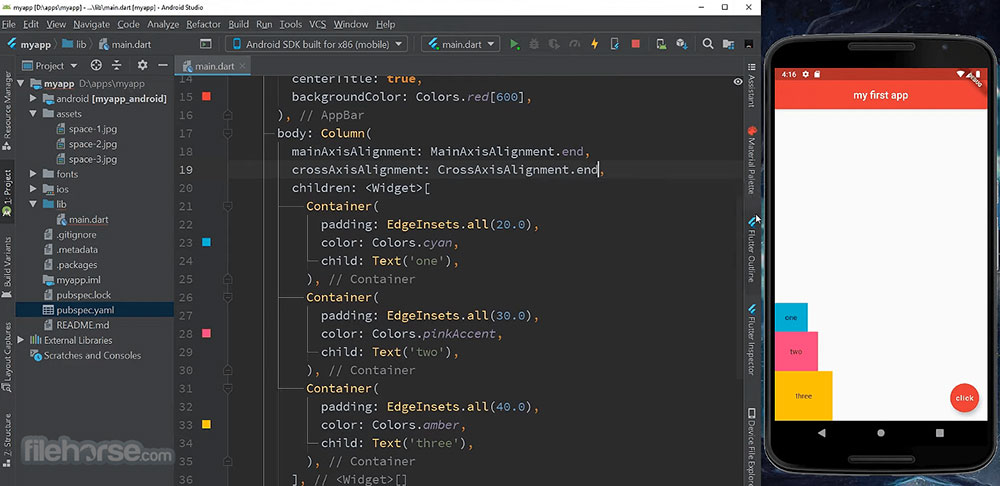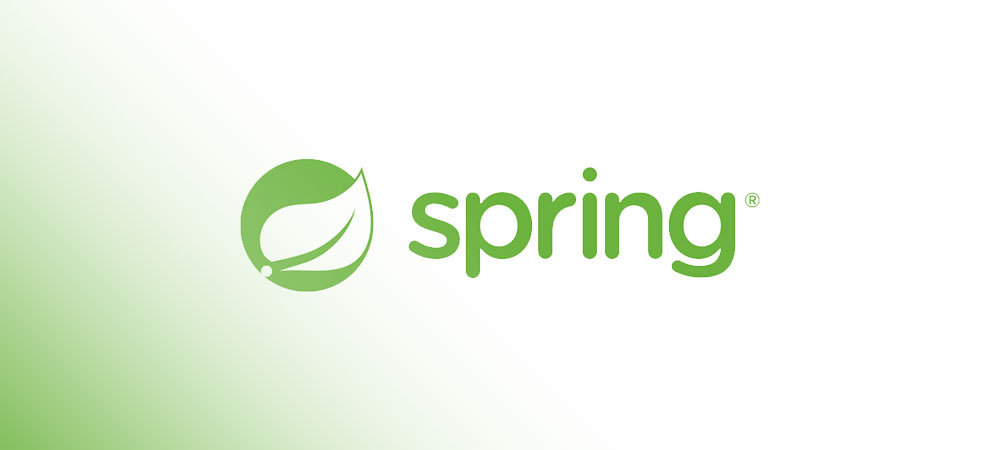Imagine crafting a digital masterpiece, only to find the tools at hand… a tad restrictive. This is the crossroad where many web connoisseurs find themselves, eyeing the horizon for Django alternatives.
The digital landscape is brimming with artists; web designers weaving the fabric of the internet, one line of code at a time. Yet, the secret sauce to creating a standout web application often lies beyond popular frameworks. It’s about picking the right framework that feels less like a straightjacket and more like a second skin.
In this read, I’m diving deep into the recesses of the web’s backstage, lighting the way through a labyrinth of frameworks, from the minimalist vibes of Flask to the sleek silhouettes of Ruby on Rails. You’ll get the skinny on the top gunslingers in town, ready to challenge Django’s reign.
By the end, you’ll not only have the lowdown on the what but also the why – shrewd insights on choosing the sidekick that’ll make your code sing. We’ll unravel, layer by layer, lightweight Django replacements, scalable web applications, and the underpinnings of modern web development libraries that could just be the ally you need.
Django alternatives
| Framework/Language | Language Based On | Main Features | Type | Use Case |
|---|---|---|---|---|
| Express | JavaScript (Node.js) | Minimalist, middleware-oriented, high performance | Web framework | REST APIs, Single Page Applications (SPAs) |
| Flask | Python | Lightweight, extensible, minimalistic | Microframework | Small to medium web apps, quick prototypes |
| Ruby on Rails | Ruby | Convention over configuration, rapid development, rich ecosystem | Web framework | Full-stack web applications |
| Laravel | PHP | Elegant syntax, ORM (Eloquent), MVC, robust tooling | Web framework | Full-stack web applications, APIs |
| ASP.NET | C# | Robust, scalable, enterprise-level, integrates with .NET ecosystem | Web framework | Enterprise web applications, APIs |
| Spring | Java | Comprehensive programming and configuration model, enterprise-grade, strong dependency injection | Application framework | Large-scale enterprise systems |
| Meteor | JavaScript (Node.js) | Full-stack platform, real-time capabilities, integrates with MongoDB | Full-stack framework | Real-time web applications |
| Vue.js | JavaScript | Reactive components, lightweight, easy to integrate with other projects | Frontend framework | SPAs, Frontend UI development |
| Angular | TypeScript | Comprehensive solution, two-way data binding, MVC pattern, enterprise-level | Frontend framework | SPAs, Large-scale frontend projects |
| React | JavaScript | Component-based, large community, rich ecosystem | Frontend library | SPAs, High-performance frontend UI |
| Svelte | JavaScript | Compiles to small vanilla JavaScript, no virtual DOM, reactivity | Frontend compiler | SPAs, Component-based frontend UI |
| Ember.js | JavaScript | Convention over configuration, robust routing, Ember CLI | Frontend framework | Ambitious web applications |
| Sinatra | Ruby | Lightweight, DSL oriented, suitable for simple web apps | Microframework | Simple web apps, APIs |
| NestJS | TypeScript | Combines OOP, FP, and FRP, heavily inspired by Angular, built for TypeScript | Backend framework | Scalable server-side applications |
| Play | Scala/Java | Lightweight, stateless, web-friendly, supports reactive programming | Web framework | Responsive web applications |
| Phoenix | Elixir | High performance, fault tolerance, leverages Erlang VM | Web framework | Scalable, real-time web applications |
| Koa | JavaScript (Node.js) | Minimalist, asynchronous I/O, middleware-centric, designed by creators of Express | Web framework | Modern web applications, APIs |
| Golang Web Frameworks (e.g., Gin) | Go | Performance-oriented, middleware support, good concurrency model | Various | High-performance web services |
| Hanami | Ruby | Lightweight, fast, testable, less memory consumption | Web framework | Lightweight full-stack web applications |
Express

Dive into the backend with Express, a minimalist web framework for Node.js. It’s like the Swiss Army knife for web devs, lightweight but loaded with the essentials. Just the ticket for a quick setup and sprint to the finish line with robust APIs and applications.
Best Features
- Fast, unopinionated framework
- Rich middleware ecosystem
- Easy integration with front-end tech
What we like about it: Express really flexes its muscles with its speed and simplicity. A no-brainer for those looking to put together a quick RESTful API that just works.
Flask
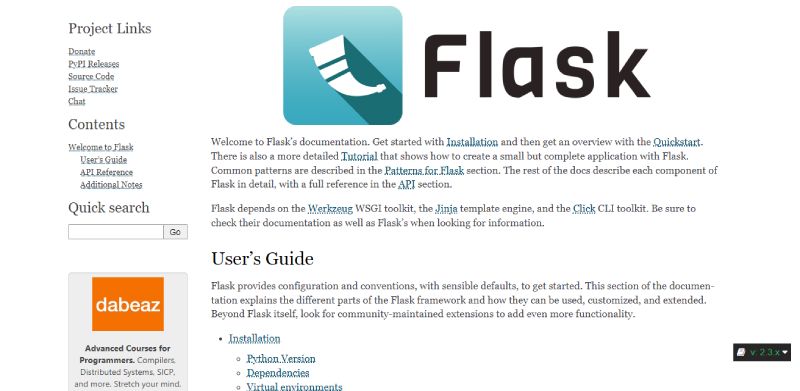
Ah, Flask. It’s like the canvas for web artisans who like to add their own splashes of color. This Python-based framework stands tall where simplicity and flexibility meet. Great for small projects that could grow something big, it doesn’t assume much about your project, which is pretty liberating.
Best Features
- Lightweight and modular
- Extensible
- Beginner-friendly
What we like about it: The thing that hooks you? The customization. Flask gives you that ‘choose your own adventure’ vibe, letting you build your own packages or plug in existing ones as needed.
Ruby on Rails
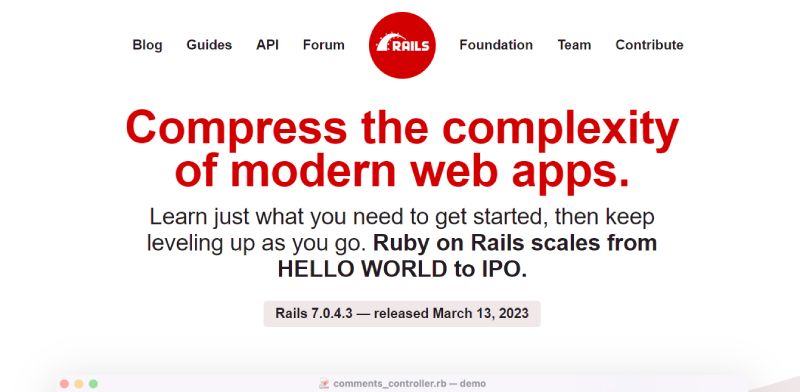
Ruby on Rails, or Rails, is all about making web development more human. Yep, it emphasizes convention over configuration which means you spend less time setting up and more time creating. It’s a full-stack framework that’s opinionated, but in the best way, leading to streamlined code and fewer decisions for the developer.
Best Features
- Convention over configuration
- Active Record ORM
- Vast library of gems
What we like about it: Ruby on Rails is all about productivity. With features like database table creations, migrations, and scaffolding of views, all rolled into one, it’s the rapid development tool you didn’t know you needed.
Laravel
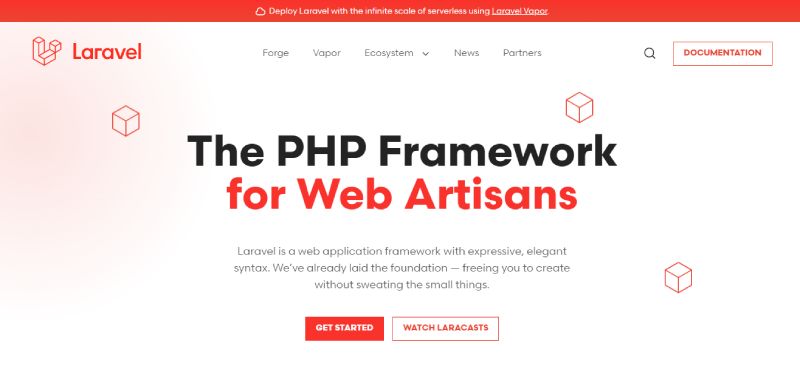
Enter Laravel, PHP’s attempt to steal your heart. It’s all about beautiful code and a developer-friendly environment. Think of Laravel as PHP’s poetry, taking all the grunts of web development and spinning it into something… well, enjoyable.
Best Features
- Elegant MVC support
- Artisan command line tool
- Robust ecosystem with Laravel Forge and Envoyer
What we like about it: Eloquent ORM is a gem. It’s like the framework understands your database relationships better than you do.
ASP.NET
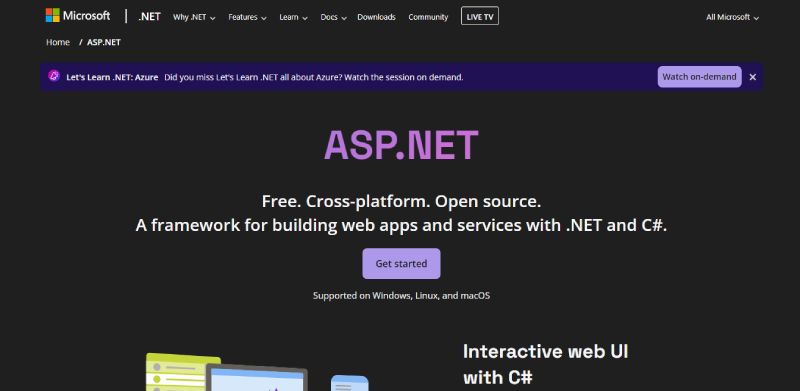
Suit up with ASP.NET, Microsoft’s framework for building dynamic web pages and applications. It’s heavy-duty, scalable, and integrated with .NET, making it a good fit for businesses that need a framework to match their ambition. And hey, it’s open-source now, so everyone’s invited to the party.
Best Features
- High performance
- Supports Windows Authentication
- Massive libraries
What we like about it: The integration with the .NET platform is slick. For those already riding the Microsoft wave, it’s a seamless transition.
Spring
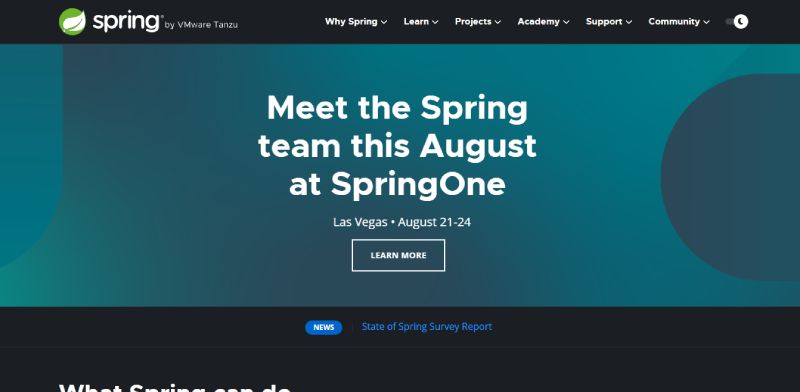
Java’s Spring brings the strength of an enterprise framework with the charm of simplicity. It’s the powerhouse that can juggle big, complex tasks, but with the poise of a framework that’s been refined over the years. It’s thorough, and it’s got a tool for just about everything in the backend.
Best Features
- Comprehensive programming and configuration model
- Strong security features
- Supports RESTful services
What we like about it: Dependency Injection (DI) shines here. It’s like your entire app fits together with interlocking pieces – clean, efficient, and well-organized.
Meteor
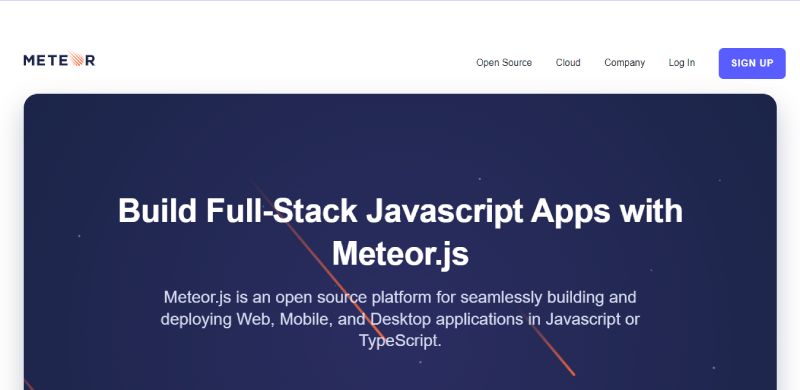
Touch down on the Meteor framework, where full-stack development gets real-time, real fast. It’s a JavaScript juggernaut that’s all about building speedy web and mobile applications. And it plays well with MongoDB, which means data changes on your app—zap!—they’re instantly live on the UI.
Best Features
- Real-time capabilities
- Integrated live testing tool
- Isomorphic JavaScript Code
What we like about it: Real-time all the way—it’s like your app’s got ESP, predicting and reacting on the fly.
Vue.js

Vue.js is JavaScript’s gentle soul. Its learning curve won’t chase you up a wall, which is a relief. It’s incrementally adoptable, which means you can sprinkle it wherever you like in your project, and its reactive components craft a seamless UI dance.
Best Features
- Reactive components
- Easy to integrate
- Light learning curve
What we like about it: That reactivity is pure magic. The way it keeps the UI flawlessly in sync with the app’s state? Smooth.
Angular
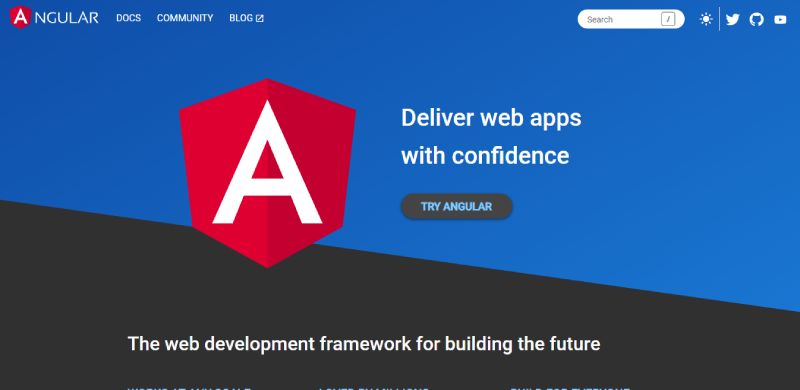
Angular comes in like the director of an epic saga, full-scale, opinionated, and meant for the grand stage of SPAs (Single-Page Applications). It’s a TypeScript-based open-source web application framework led by the Angular Team at Google and a host of community folks.
Best Features
- Two-way data binding
- Modular development structures
- Command line tools
What we like about it: Two-way data binding. It’s like your data’s having a meaningful convo, and the UI and model are always in perfect harmony.
React
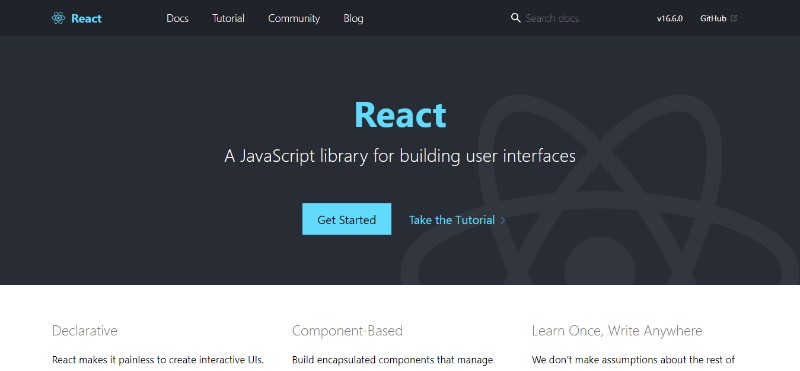
React isn’t just a framework; it’s a declaration. It’s the go-to for devs looking to build big, high-velocity web apps where data needs to dance elegantly across the UI. React’s component-based architecture makes reusable code a breeze, making your codebase neater and more manageable.
Best Features
- Component-based architecture
- Virtual DOM for performance
- Rich JavaScript library ecosystem
What we like about it: The Virtual DOM. It’s like having a backstage crew making all the changes before the audience notices.
Svelte
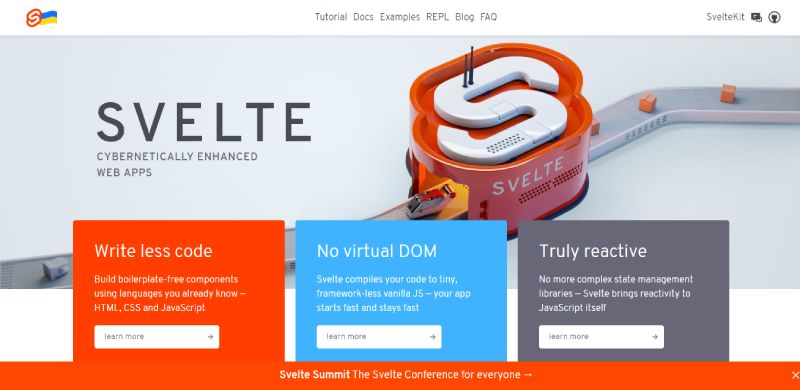
Svelte is the new kid on the JavaScript block that’s turning heads. It’s different because it does the heavy lifting during compile time, not run time, making your apps lighter and faster. It’s a compiler that constructs surgically precise updates to the DOM.
Best Features
- Less code
- No virtual DOM
- Truly reactive
What we like about it: No virtual DOM is revolutionary. Svelte writes code that updates the DOM when your app state changes—efficient and… kinda brilliant.
Ember.js

Ember.js is for those who like their paths well-lit and well-trod. It’s a JavaScript framework that provides a solid structure for your app, with strong opinions on how things should be done. It’s all about productivity and convention, with a grand set of features out of the box.
Best Features
- Well-structured
- Convention over configuration
- Rich routing system
What we like about it: Routing in Ember.js is robust. It’s like having a powerful GPS guiding you through the complexities of modern web applications.
Sinatra

Strap on your bluesy, minimalist boots with Sinatra. It’s the pared-down, Ruby framework for creating simple web applications fast. Think of it as the direct route from your brain to the web, no baggage, no fuss. Sinatra’s simplicity doesn’t mean a lack of power, though; it’s still quite the performer.
Best Features
- Simple and lightweight
- Flexible
- Easy to learn and use
What we like about it: Simplicity is key. Sinatra is like that acoustic solo—pure, no distortion—just the essentials to make your tune shine.
NestJS
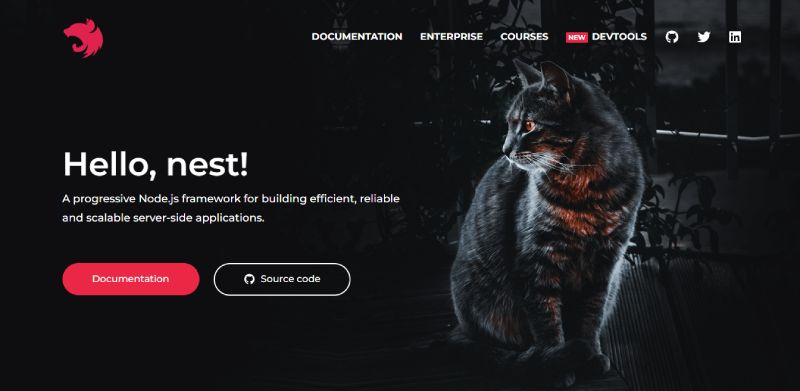
Cast a glance NestJS’s way if you’re in the mood for something progressive. It’s a Node.js framework for your backend adventures, blending elements from Object-Oriented Programming, Functional Programming, and Functional Reactive Programming. It’s got a robust, scalable application architecture right out of the box.
Best Features
- Extensible
- Versatile and progressive
- Uses TypeScript by default
What we like about it: The application architecture. It’s solid, it’s articulate, and it makes for a sturdy backbone for any complex app.
Play
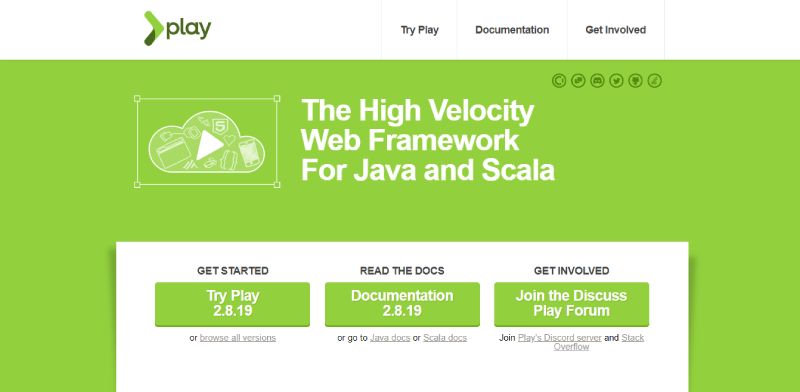
Ready to play? The Play framework is the high-velocity, Scala and Java ace up your sleeve. It’s built on Akka for that non-blocking jazz, meaning it can handle oodles of traffic without breaking a sweat. Suited for web services that need to be both scalable and responsive.
Best Features
- Asynchronous by default
- Scalable and high-performance
- Hit the ground running with hot reload
What we like about it: The hot reload feature is a time-saver. Change your code, hit refresh, and bam—it’s there.
Phoenix
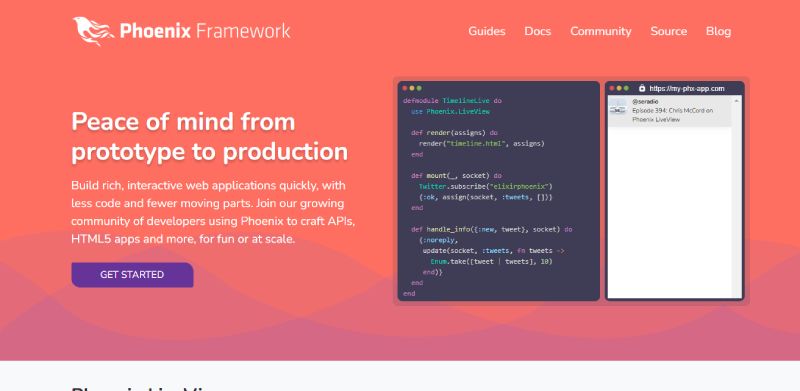
Phoenix takes flight for high-performing projects with a need for real-time services. Built on Elixir and running on the Erlang VM, it’s a powerhouse of fault tolerance. It’s got the resilience and reliability of Erlang with a fresh breath of modernity, perfectly built for today’s web scale.
Best Features
- Fault tolerance
- Real-time bidirectional communication
- Scalable
What we like about it: The real-time communication it offers is top-notch. It’s as live as live gets.
Koa
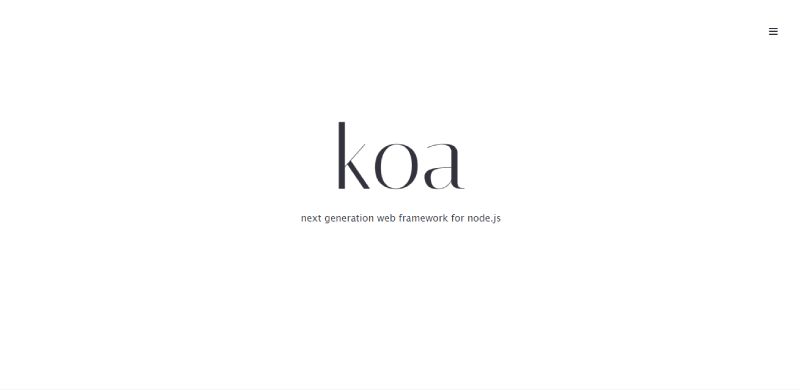
Koa is like the chilled-out cousin of Express, also made by the same team. It’s a new-gen Node.js framework, with async functions out of the box to ditch callbacks and streamline error handling. It’s all about writing smaller, more expressive middleware.
Best Features
- Lightweight core
- Expressive middleware
- Simplified error handling
What we like about it: Use of async functions. No callbacks cluttering your flow means cleaner, more understandable code.
Golang Web Frameworks
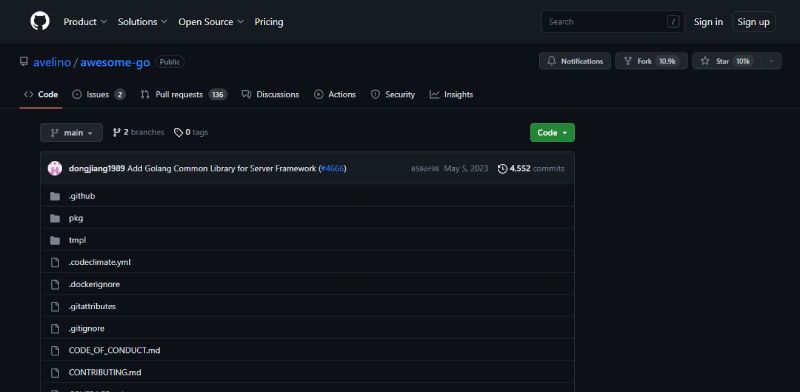
Gophers unite! Golang Web Frameworks like Gin and Revel pack a punch into the world of web development. They offer the speed and performance of Go with the ease of a framework. Perfect for devs looking to harness Go’s concurrency model for web apps that scale like a dream.
Best Features
- Performance of Go
- Concurrency
- Fast compilation
What we like about it: Concurrent processing. It’s built for speed and built to handle modern web traffic without skipping a beat.
Hanami

Hanami might be the lesser-known gem in the Ruby world. It’s like a focused beam of light, illuminating only what’s necessary. With a commitment to minimalism and speed, Hanami is seen as a refreshing, lightweight alternative to the more expansive Rails framework.
Best Features
- Lightweight and fast
- Promotes single-purpose, high-cohesion objects
- Consumes less memory
What we like about it: The memory footprint. In an era of efficiency, Hanami stands out for keeping things lean and mean.
FAQ on Django alternatives
What makes Flask a viable alternative to Django?
Flask is the artist’s brush for the meticulous. It grants raw control and a modular approach, allowing for piecing together components as needed. It’s all about minimalism and precision here, as opposed to Django’s ‘batteries-included’ philosophy.
How does Ruby on Rails stand against Django for web development?
Rails is all about convention over configuration. It streamlines development, enabling quick launches. Ruby’s elegance and the framework’s strong community backing make it a heavyweight amongst web frameworks that love to get things moving fast.
Is Express.js suitable for former Django developers?
Oh, definitely. Express.js speaks to the heart of coders in JavaScript, with Node.js under the hood. It’s like jazz, really—improvisational yet structured—perfect for crafting RESTful APIs and single-page applications with a modern touch.
Can Laravel be considered an alternative for Python-based Django?
Indeed. Laravel’s PHP artisans claim it’s a web framework for web artisans. It’s got this elegant syntax, robust features, and it’s all about writing clean, readable code. Transitioning devs find familiarity in MVC architecture, like jumping from one dialect to another.
Does ASP.NET Core offer the same functionality as Django?
In a world of .NET, ASP.NET Core is the knight in shining armor. It’s cross-platform, blazing fast, and Open Source, too. For enterprise-level applications, especially, it swings a heavy sword, offering a robust, scalable environment that’s entirely in sync with modern needs.
What is the learning curve for switching from Django to Spring Framework?
Java’s Spring Framework is like moving into a new neighborhood. There’s a bit of orientation needed, sure, but it’s rich in features and it tackles complex, large-scale projects like a charm. For those who appreciate a hefty toolbox, it’s worth the climb.
How do Node.js frameworks other than Express.js compare as Django alternatives?
Node.js frameworks are like siblings; similar DNA, unique personalities. From Hapi’s security-first approach to Sails’s MVC pattern great for Real-Time systems, they offer diverse approaches. There’s a flavor for everyone, ready to serve data on a silver Node platter.
In terms of simplicity and ease of use, how do Django alternatives like TurboGears and web2py stack up?
TurboGears and web2py whisper promises of simplicity, wielding the power of Python. They give you user-friendly vibes and robust toolsets without overwhelming you with complexity. A choice for many who seek quicker, more straight-to-the-point web crafting sessions.
Are Django alternatives like CMS platforms (WordPress, Joomla, Drupal) feasible for web developers?
CMS platforms switch up the game, bring a different context to the web arena. If the focus tilts toward content management and less on unique application building, they’re absolutely in the running. Plus, you get that rich ecosystem of themes and plugins.
What about microservices architecture? Which Django alternatives excel in that area?
Look at the constellation of microservices, and you’ll find Spring Boot and Express.js shining bright. These frameworks align with the movement towards independent, lightweight services that scale and evolve with ease. They’re tailored to fit in the microservices jigsaw puzzle quite effortlessly.
Ending thoughts
Alright, so we’ve waded through the sea of Django alternatives, looking at options spanning from Python’s very own Flask to the realms of Express.js in JavaScript-land. These players on the field, they’ve got their swagger, each flaunting their toolbox, ready for the tasks web builders throw at them.
The final note, the essence of this whole jam, is about choice. Yeah, choice and fit. It’s akin to hunting down that perfect pair of shoes; you know, the kind that feels as if they were made just for you. Whether you’re all about that lean code life, or a full-stack ensemble piques your interest, there’s a framework out there just humming your tune.
- Flask squares up with simplicity?
- Ruby on Rails keeps it productive?
- Node.js frameworks push the real-time envelope?
Gather the breadcrumbs, then decide. Where you tread next in the web universe, it’s your call, with the right framework as your trusty sidekick.
If you liked this article about Django alternatives, you should check out this article about Hadoop alternatives.
There are also similar articles discussing Next.js alternatives, Bootstrap alternatives, React alternatives, and Java alternatives.
And let’s not forget about articles on JavaScript alternatives, GraphQL alternatives, jQuery alternatives, and Python alternatives.
- Crafting the Perfect App Description to Engage Users - April 20, 2024
- Ultimate Streaming: Entertainment Apps Like Kodi - April 19, 2024
- Design’s Descent: What Happened to Fab? - April 19, 2024






